Apertochrysa flavifrons (formerly Dichochrysa flavifrons)
A very common species, mostly flying between late June and August (strongly peaking in late July/early August) but I have recorded this species right up to the second half of October.
This is one of a group of relatively unmarked green lacewings that require examination of the hairs on the wing to identify. Firstly eliminate the Chrysoperla spp. (see Chrysoperla carnea for details - and remember, best to check both wings in case of abnormalities). Also check there is no black spot between the antennae and the second segment of the antennae is green. You are then left with the Nineta species, the commonest of which, vittata, is large and has a long swollen basal segment of the antennae. The other Nineta species are usually large (forewing >= 16mm) and if you happen across an unusually small example the species so far recorded in Norfolk has a concave costal edge to the forewing.
Unlike the similar Cunctochrysa species, flavifrons lacks a strong pale creamy stripe down the centre of the thorax and the hairs on the costa stick out more prominently. Compared to Chrysopidia ciliata these hairs are more angled, lying at around 45 degrees to the costa whereas they're closer to straight out on ciliata. The hairs on the costal cross-veins mostly point backwards but a few may point forwards too, however these hairs don't generally overlap like they do in ciliata as they are shorter. The palps are ringed with black whereas if they're dark at all on ciliata it should only be on the outer face.
Plant (1997) also differentiates Apertochrysa flavifrons (along with what is now Cunctochrysa cosmia) from Chrysopidia ciliata (along with Cunctochrysa albolineata) by the colour of the basal costal vein and the cross-vein between the radial and subcostal veins in the forewing. The basal cross-vein is entirely dark in flavifrons/cosmia and partly or entirely pale in ciliata/albolineata, whereas the radial to subcostal cross-vein is usually pale in flavifrons/cosmia and usually black or at least darkened in ciliata/albolineata. I have struggled with this couplet, with many individuals not seeming to conform to both characters, resolvable only by taking "usually" to be "not this time" or else requiring "darkened" to be so slight as to be easily missed or "partly" to be extremely minimally.
.jpg)
.jpg)
2x Apertochrysa flavifrons, North Elmham (Norfolk, UK), 6th July 2018
The close-up photo below shows a combination of characters that enable a confident identification from the photo. Firstly you can see that vein RMCV is proximal to (i.e. head-side of) the apex of cell IMC, thus eliminating Chrysoperla species. You can see the absence of black on the antennae, between the antennae or on the top of the head. The basal cross-vein is dark (take care here as it's not always obvious from photos if you're looking at the basal vein or not), there is no pale dorsal stripe through the centre of the thorax, the palps are clearly dark-ringed and you can just make out the clearly protruding hairs along the leading edge of the wing, angled at roughly 45 degrees to the costa.
.JPG)
 crop annotated.JPG)
.JPG)
2x Apertochrysa flavifrons, North Elmham (Norfolk, UK), 23rd August 2016 (second annotated photo is a close crop of the first)
, North Elmham, 16-Jun-22 (A) (1).jpg)
, North Elmham, 16-Jun-22 (A) (1).jpg)
, North Elmham, 16-Jun-22 (A) (5).jpg)
female Apertochrysa flavifrons showing base of forewing, North Elmham (Norfolk, UK), 16th June 2022
The above lacewing was easy enough to identify, but I examined it carefully for the some of the finer wing characters that I have found confusing. Firstly the basal cross-vein (circled in red in the images below) which is meant to be "entirely dark" was indeed clearly dark, considerably darker than any other veins in the area. However strictly speaking it wasn't entirely dark as there was a fair bit of undarkened green within it. Secondly the cross vein between Sc and R (circled blue) which is meant to be "usually pale" (as opposed to "usually black or at least darkened") was slightly darkened, particularly towards the end, but yes, overall it was pale (i.e. the same colour green as the longitudinal veins and most of the cross-veins). Thirdly the dark spots at the base of the costa (circled gold) - these were easy enough to see on both forewings, though note that they are on the membrane adjacent to the costal vein not on the vein itself.
, North Elmham, 16-Jun-22 (A) (7) annotated.jpg)
, North Elmham, 16-Jun-22 (A) (3) annotated.jpg)
same female Apertochrysa flavifrons showing bases of both forewings, North Elmham (Norfolk, UK), 16th June 2022
Plant notes that these costal spots can sometimes be easier to find on the hindwings - not in this case where they were completely absent on both hindwings.
, North Elmham, 16-Jun-22 (A) (9).jpg)
, North Elmham, 16-Jun-22 (A) (10).jpg)
same female Apertochrysa flavifrons showing bases of both hindwings, North Elmham (Norfolk, UK), 16th June 2022
The other character worth noting with reference to the key in Plant (1997) is the direction of the cilia on the costal cross veins. Plant states that some point towards the wing-tip and some point towards the base. You might be tempted to read into this that a good number point both ways, but in my expperience the vast majority (i.e. nearly all of them) always point towards the wing-tip and sometimes I have been hard-pushed to find any at all that point towards the base. In this case I checked one wing carefully and found a very small number of single hairs that pointed more towards the base than the wing-tip. In fact even these were I think were pointing more perpendicarly (i.e. out from the wing) than towards the base. What you can see more clearly on this photo is the hairs on the costa, several times longer than the vein itself and protruding at about 45 degrees.
, North Elmham, 16-Jun-22 (A) (6).jpg)
same female Apertochrysa flavifrons showing middle of leading edge of forewing, North Elmham (Norfolk, UK), 16th June 2022
According to the key, flavifrons never has a paler longitudinal stripe along the thoracic dorsum. Many don't have any hint of such a longitudinal stripe but in my experience a few do - in some cases quite distinctly more yellow down the centre of the thorax contrasting with the green sides. Maybe it's not as distinct as on some other species of green lacewing but certainly enough to be able to describe it as a pale longitudinal stripe I think.
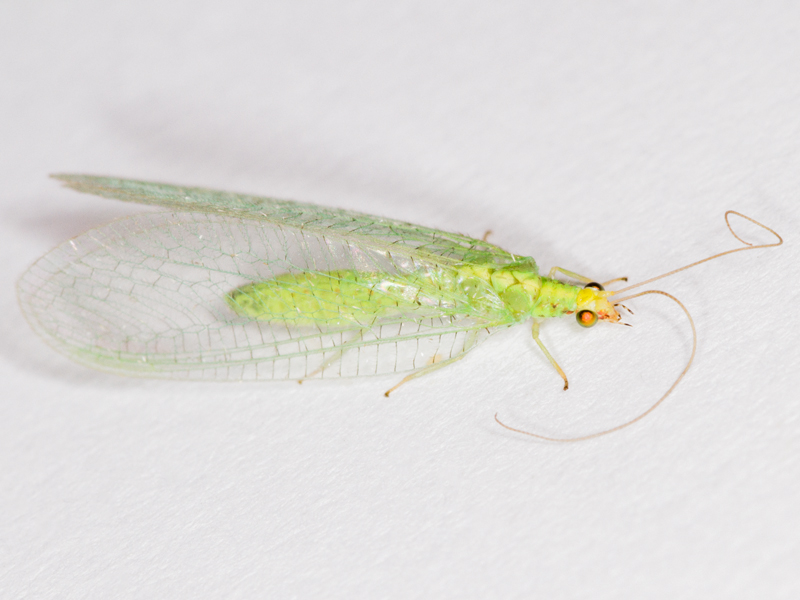
Apertochrysa flavifrons, North Elmham (Norfolk, UK), 11th July 2022
I have only photographed part of one forewing but under the microscope I couldn't see costal cross-vein hairs that weren't pointing backwards. Note also vein Sc-R is pale with a narrow dark edge, which is exactly as is often shown by Cunctochrysa albolineata. Not all the characters given in the key are 100% reliable...
, North Elmham, 12-Jul-22 (A) (1).jpg)
, North Elmham, 12-Jul-22 (A) (2).jpg)
, North Elmham, 12-Jul-22 (A) (3).jpg)
, North Elmham, 12-Jul-22 (A) (4).jpg)
Apertochrysa flavifrons showing basal cross-vein, cross-vein between Sc and R and mid costal hairs, North Elmham (Norfolk, UK), 12th July 2022
This male had slighly darkened vein Sc-R. The internal genitalia aren't usually necessary for identification of green lacewings but I'm trying to examine some in case I ever need to examine a very aberrant or damaged specimen where there isn't much else to go on.
, North Elmham, 30-Jul-22 (B) (1).jpg)
, North Elmham, 30-Jul-22 (B) (2).jpg)
, North Elmham, 30-Jul-22 (B) (3).jpg)
, North Elmham, 30-Jul-22 (B) (4).jpg)
, North Elmham, 30-Jul-22 (B) (5).jpg)
, North Elmham, 30-Jul-22 (B) (6).jpg)
male Apertochrysa flavifrons showing base of forewing, cleared abdomen from side and internal structures (one at two different orientations), North Elmham (Norfolk, UK), 30th July 2022
This female caught the same night also had a slightly darkened vein Sc-R. Both of its forewings also showed vein RMCV level with or slightly beyond the tip of cell IMC as you'd normally find in the Chrysoperla carnea complex.
, North Elmham, 30-Jul-22 (A) (1).jpg)
, North Elmham, 30-Jul-22 (A) (2).jpg)
, North Elmham, 30-Jul-22 (A) (3).jpg)
, North Elmham, 30-Jul-22 (A) (6).jpg)
, North Elmham, 30-Jul-22 (A) (7).jpg)
, North Elmham, 30-Jul-22 (A) (8).jpg)
, North Elmham, 30-Jul-22 (A) (9).jpg)
female Apertochrysa flavifrons showing base of both forewings and internal structure (spermatheca?) at different orientations, North Elmham (Norfolk, UK), 30th July 2022
Some lacewings can have dirty darkened patches on their antennae which, when they're relatively clear-cut, can look like black segments. Do not confuse this with the black second segment shown by e.g. Chrysopa commata.
, North Elmham, 17-Jul-22 (B).jpg)
, North Elmham, 17-Jul-22 (A) (1).jpg)
, North Elmham, 17-Jul-22 (A) (2).jpg)
male and female Apertochrysa flavifrons showing female's base of antennae, North Elmham (Norfolk, UK), 17th July 2022
On this one it looks like the second segment is black, but only on its left antenna.
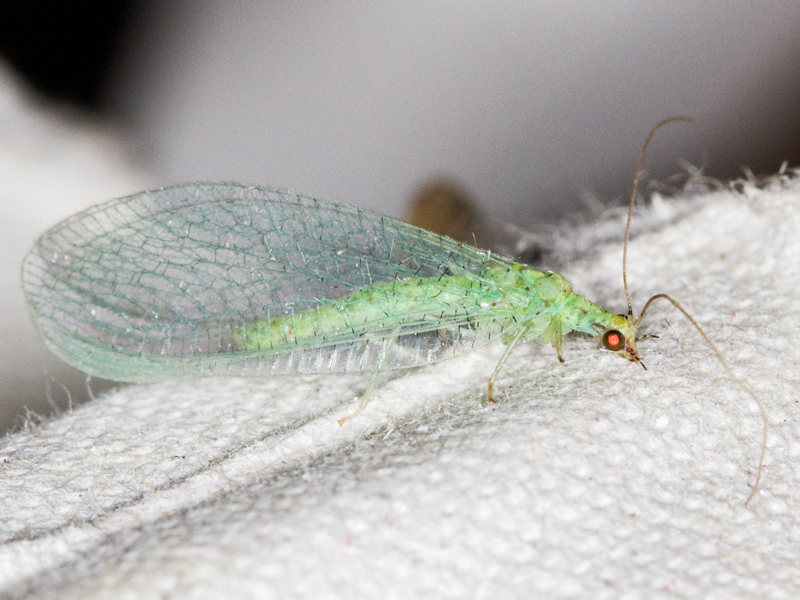
Apertochrysa flavifrons, North Elmham (Norfolk, UK), 3rd August 2022
 (1).JPG)
 (2).JPG)
 (3).JPG)
Apertochrysa flavifrons, North Elmham (Norfolk, UK), 26th May 2023

Apertochrysa flavifrons, North Elmham (Norfolk, UK), 16th July 2023
 (1).JPG)
 (2).JPG)
 (3).JPG)
Apertochrysa flavifrons, Sporle Wood (Norfolk, UK), 27th July 2023
 (1).JPG)
 (2).JPG)
Apertochrysa flavifrons, North Elmham (Norfolk, UK), 13th August 2022
, North Elmham, 3-Sep-22 (A) (1).JPG)
, North Elmham, 3-Sep-22 (A) (2).JPG)
, North Elmham, 3-Sep-22 (A) (3).JPG)
, North Elmham, 3-Sep-22 (A) (4).JPG)
male Apertochrysa flavifrons showing base of forewing, mid costa of forewing and abdomen from side, North Elmham (Norfolk, UK), 3rd September 2022
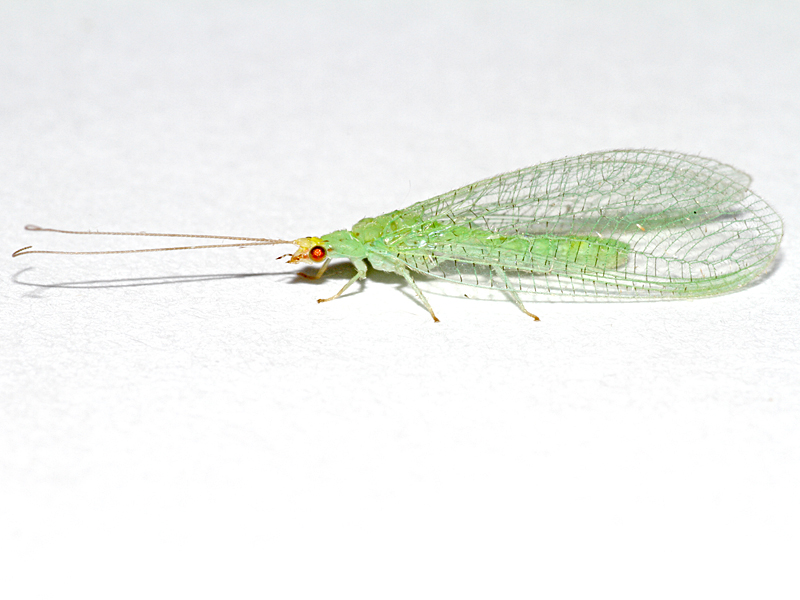
Apertochrysa flavifrons, North Elmham (Norfolk, UK), 2nd August 2016
.JPG)
Apertochrysa flavifrons, North Elmham Cathedral Meadows (Norfolk, UK), 18th July 2018
This larva was found in a pot that had contained the above adult lacewing, so presumably had emerged from an egg the adult laid shortly after collection.
 (1).JPG)
 (2).JPG)
Apertochrysa flavifrons larva, 30th July 2018, from adult collected at North Elmham Cathedral Meadows (Norfolk, UK), 18th July 2018

Apertochrysa flavifrons, North Elmham Cathedral Meadows (Norfolk, UK), 18th June 2020

Apertochrysa flavifrons, North Elmham (Norfolk, UK), 10th July 2016
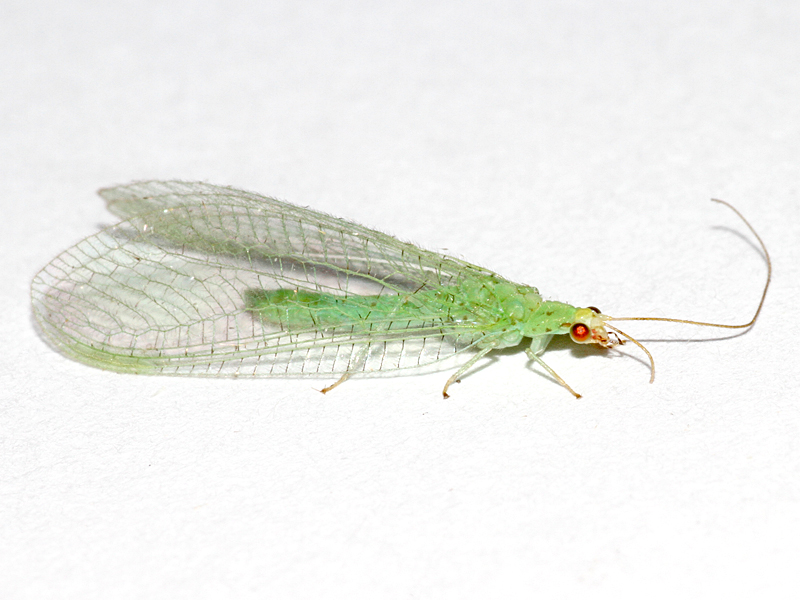
Apertochrysa flavifrons, North Elmham (Norfolk, UK), 3rd August 2016
.JPG)
Apertochrysa flavifrons, North Elmham (Norfolk, UK), 23rd July 2016
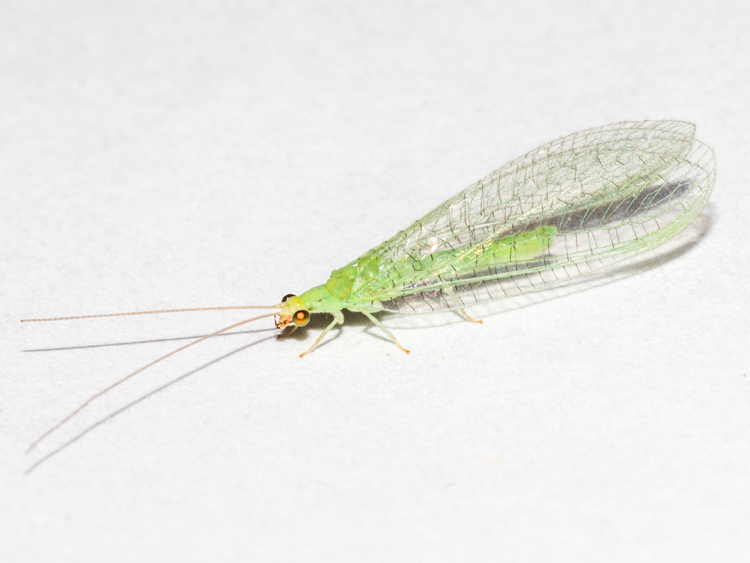
Apertochrysa flavifrons, North Elmham (Norfolk, UK), 23rd October 2019
.JPG)
Apertochrysa flavifrons, North Elmham (Norfolk, UK), 24th August 2016
.JPG)
Apertochrysa flavifrons, North Elmham (Norfolk, UK), 6th July 2017
This tatty specimen showed a dark band across each antenna covering the tip of the second segment and the base of the third. Dark on the second segment of the antenna should rule out Apertochrysa flavifrons, but if we follow the key based on it having a partially darkened second segment, a combination of other features including a clear tooth on the base of the claws would make this Chrysopa abbreviata. That is a species of marram grass so would be unlikely to occur here in my garden, but more importantly it doesn't really look like this, having, for example, dark spots on the head that are absent on this individual. Given the mucky state of this insect, and its general resemblance to Apertochrysa flavifrons (it keys to that if we ignore the dark on the antennae), I think we must assume that the darkening of the antennal segments is a mere abnormality, perhaps caused by damage or contamination.
 (1).JPG)
 (2).JPG)
 (3).JPG)
Apertochrysa flavifrons, North Elmham (Norfolk, UK), 6th September 2016
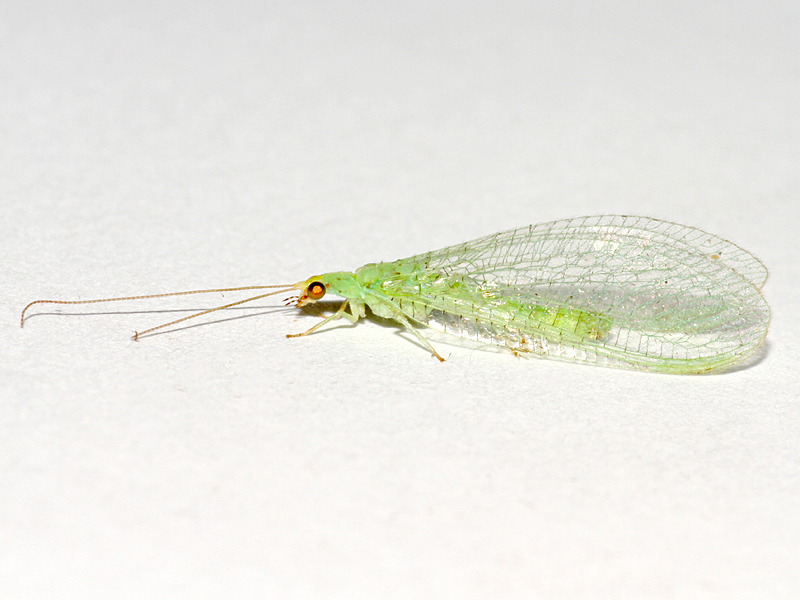
Apertochrysa flavifrons, North Elmham (Norfolk, UK), 5th September 2016
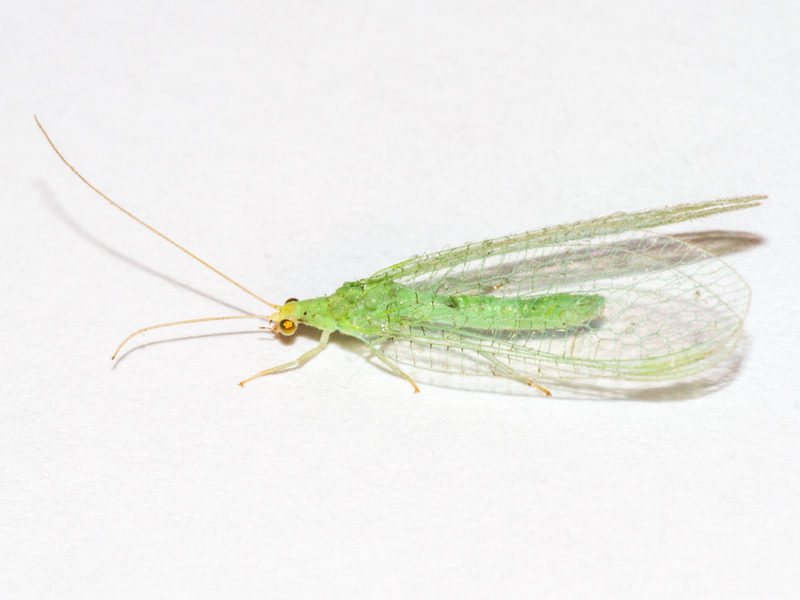
Apertochrysa flavifrons, North Elmham (Norfolk, UK), 1st August 2020
